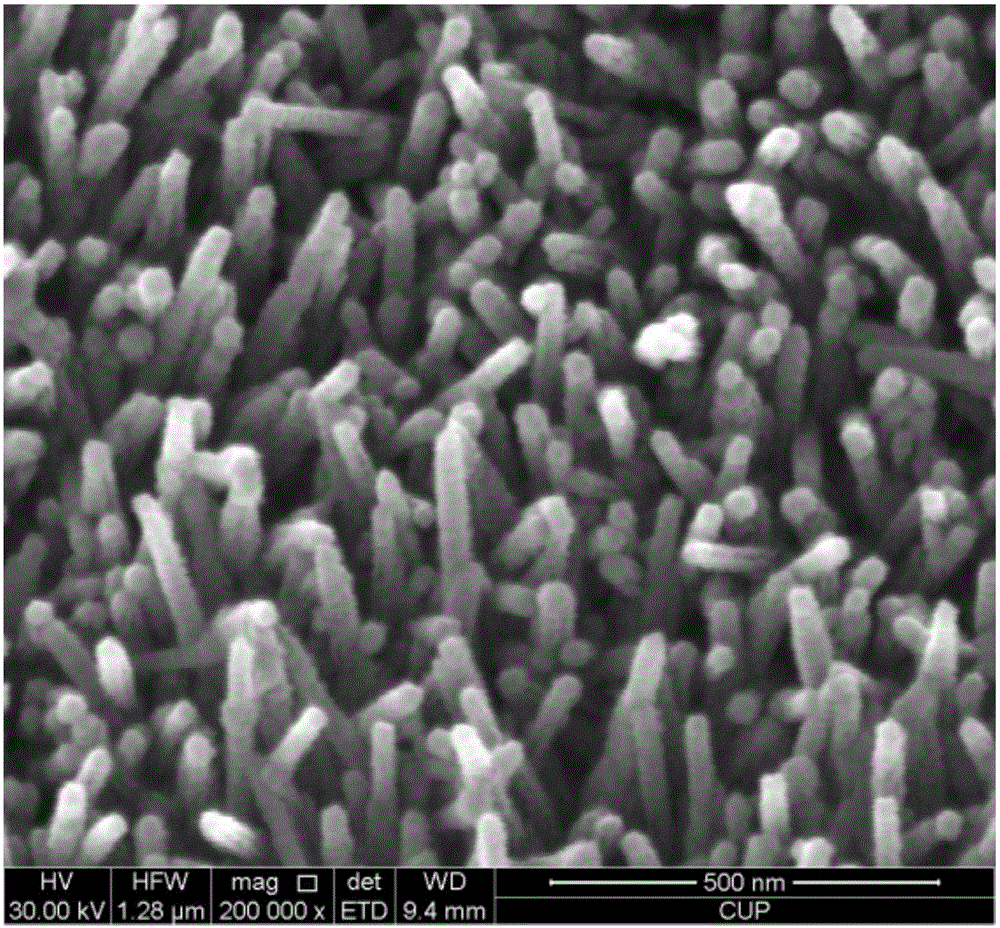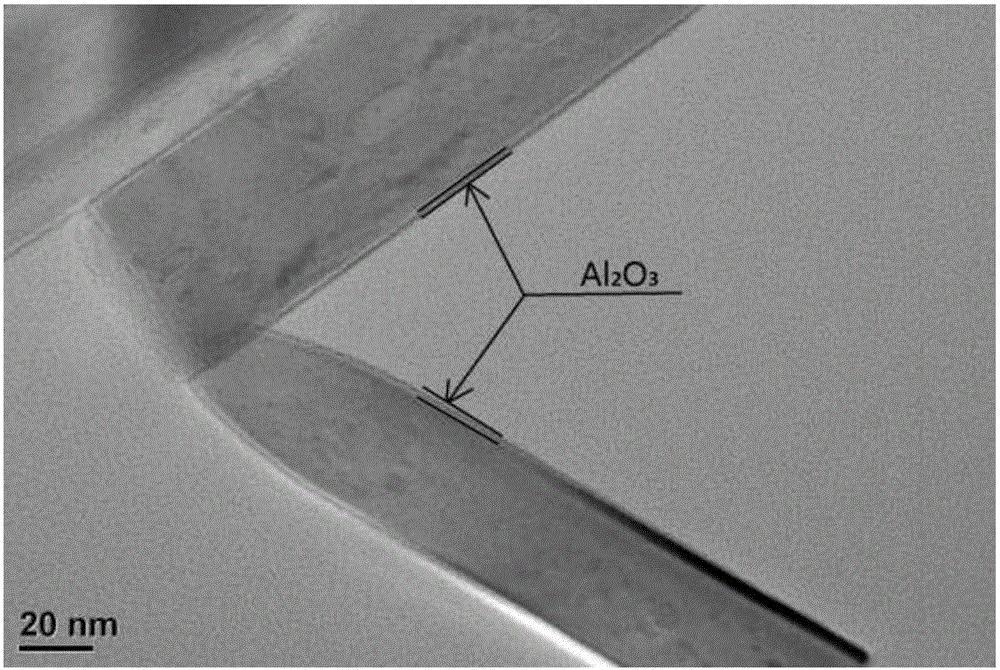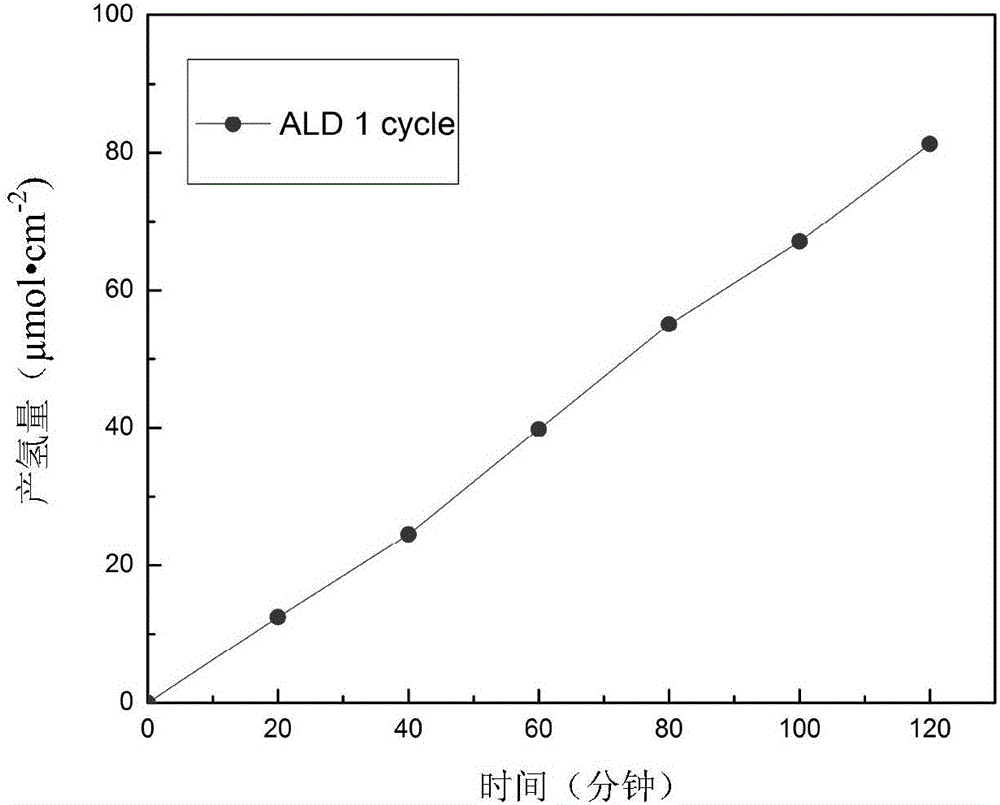Al2O3 modified array TiO2 nanowire and method for photoelectrocatalysis water decomposition hydrogen production
A technology of nanowires and arrays, applied in the field of photocatalysis, to achieve large surface area, improve photocatalytic performance, and increase the rate
- Summary
- Abstract
- Description
- Claims
- Application Information
AI Technical Summary
Problems solved by technology
Method used
Image
Examples
Embodiment 1
[0057] This embodiment provides an Al 2 o 3 Modified Array TiO 2 Nanowire photocatalyst, its preparation method specifically comprises the following steps:
[0058] The carbon cloth was ultrasonically cleaned in acetone, distilled water, and absolute ethanol in sequence. Prepare a n-hexane solution of titanium tetrachloride with a concentration of 0.05mol / L, soak the cleaned carbon cloth in it, and let it stand for 10 hours; take out the carbon cloth and put it in a tube furnace, and raise the temperature from 30°C at 4°C / min To 500°C, keep the temperature at 500°C for 30 minutes, and make a carbon cloth with a good seed layer. In a 200ml polytetrafluoroethylene reaction kettle, add toluene, tetrabutyl titanate, concentrated hydrochloric acid (that is, concentrated hydrochloric acid with a mass concentration of 37%), and titanium tetrachloride dropwise in sequence, and stir well, wherein toluene, tetrabutyl titanate The volume ratio of butyl ester, concentrated hydrochlori...
Embodiment 2
[0061] This embodiment provides an Al 2 o 3 Modified Array TiO 2 Nanowire photocatalyst, its preparation method specifically comprises the following steps:
[0062] The carbon cloth was ultrasonically cleaned in acetone, distilled water, and absolute ethanol in sequence. Prepare a n-hexane solution of titanium tetrachloride with a concentration of 0.05mol / L, soak the cleaned carbon cloth in it, and let it stand for 10 hours; take out the carbon cloth and put it in a tube furnace, and raise the temperature from 30°C at 4°C / min To 500°C, keep the temperature at 500°C for 30 minutes, and make a carbon cloth with a good seed layer. In a 200ml polytetrafluoroethylene reaction kettle, add toluene, tetrabutyl titanate, concentrated hydrochloric acid (that is, concentrated hydrochloric acid with a mass concentration of 37%), and titanium tetrachloride dropwise in sequence, and stir well, wherein toluene, tetrabutyl titanate The volume ratio of butyl ester, concentrated hydrochlori...
Embodiment 3
[0066] This embodiment provides an Al 2 o 3 Modified Array TiO 2 Nanowire photocatalyst, its preparation method specifically comprises the following steps:
[0067] The carbon cloth was ultrasonically cleaned in acetone, distilled water, and absolute ethanol in sequence. Prepare a n-hexane solution of titanium tetrachloride with a concentration of 0.01mol / L, soak the cleaned carbon cloth in it, and let it stand for 10 hours; take out the carbon cloth and put it in a tube furnace, and raise the temperature from 30°C at 4°C / min To 500°C, keep the temperature at 500°C for 30 minutes, and make a carbon cloth with a good seed layer. In a 200ml polytetrafluoroethylene reaction kettle, add toluene, tetrabutyl titanate, concentrated hydrochloric acid (that is, concentrated hydrochloric acid with a mass concentration of 37%), and titanium tetrachloride dropwise in sequence, and stir well, wherein toluene, tetrabutyl titanate The volume ratio of butyl ester, concentrated hydrochlori...
PUM
| Property | Measurement | Unit |
|---|---|---|
| length | aaaaa | aaaaa |
| diameter | aaaaa | aaaaa |
| length | aaaaa | aaaaa |
Abstract
Description
Claims
Application Information
 Login to View More
Login to View More - Generate Ideas
- Intellectual Property
- Life Sciences
- Materials
- Tech Scout
- Unparalleled Data Quality
- Higher Quality Content
- 60% Fewer Hallucinations
Browse by: Latest US Patents, China's latest patents, Technical Efficacy Thesaurus, Application Domain, Technology Topic, Popular Technical Reports.
© 2025 PatSnap. All rights reserved.Legal|Privacy policy|Modern Slavery Act Transparency Statement|Sitemap|About US| Contact US: help@patsnap.com



